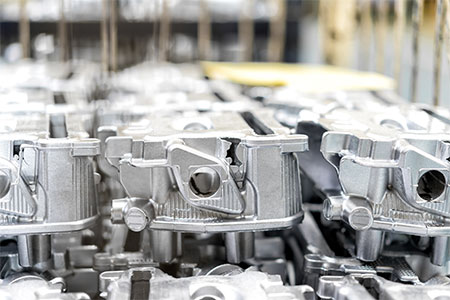
What Is Thixomolding?
Every day, plastic injection molding companies produce all kinds of plastic parts and finished goods for industrial, commercial, and consumer markets. However, with some minor modifications, those same machines can produce high-strength, lightweight magnesium alloy parts, and the process that makes it a reality is thixomolding.
Thixomolding, a semi-solid metal casting process, has been around since the early 1990s. For a long time, it was primarily used to produce smaller parts and enclosures for electronic devices. However, over the past several years, advancements in processes and improvements in alloys are making this process an excellent choice for manufacturing lightweight and durable parts for defense, automotive, aerospace, electronics, medical, and consumer applications.
Let’s look at what the thixomolding process involves.
The Thixomolding Process
The thixomolding process is similar to the plastic injection molding process. The primary differences are the feedstock (material) and molding temperature. Since the molding temperature is considerably higher than plastic injection molding, the screw, barrel, and band heaters must be capable of handling higher processing temperatures.
The process involves feeding magnesium alloy chips (granules) at room temperature into a hopper. The chips then pass through the volumetric feeder into the machine’s barrel. The barrel contains argon gas to prevent oxidation of the alloy. Then, the alloy is heated by a reciprocating screw and the barrel’s band heaters.
Once the material reaches the desired temperature, a “thixotropic” slurry is created. Thixotropic refers to any material with a stable viscosity under constant stress.
The reciprocating screw pushes the thixotropic slurry forward at a controlled rate, and the material is forced into a preheated mold. The final result is a lightweight, durable, high-strength, near-net-shaped finished part.
| 1. Magnesium chips are fed into a hopper which gravity feeds into a volumetric feeder. |
| 2. The chips enter a barrel containing argon gas. |
| 3. The chips are heated to a predetermined temperature. |
| 4. After reaching temperature, the chips become a thixotropic slurry. |
| 5. The thixotropic slurry is forced under high pressure into the mold, and a finished part is ejected. |
Advantages
This process has several advantages compared to other processes like plastic injection molding and die casting.
First, the finished parts are much lighter and thinner than plastic molded and die-casted parts. Strength and durability are also vastly improved. Compared to die-casted parts, the porosity level of thixomolded products is considerably lower. In fact, it’s not uncommon to attain less than 1% porosity with thixomolding.
Thixomolding also generates less waste compared to other processes. The process’s molding temperatures are lower than die casting, which increases the life of the mold and improves efficiency. Additionally, all magnesium alloy parts are recyclable, as are the gates and runners. Finally, magnesium alloy has electromagnetic interference (EMI) shielding, which isn’t possible with plastics.
Common Applications
The electronics industry uses thixomolding to produce thin-walled enclosures on electronic devices like laptops and notebooks. However, the automotive and aerospace industries also use thixomolded products to help reduce the weight of frames and structures, which reduces fuel consumption.
Learn More About Thixomolding Today
Do you want to learn more about thixomolding? Reach out to our team at Silver Basis Engineering. Founded over 20 years ago, we’re an industry-leading and award-winning manufacturer with over 511 patents and numerous accreditations and certifications. We specialize in semi-solid die casting, plastic injection molding, mold repairs and tryouts, and prototyping.
Contact us today with questions about thixomolding or to learn more about our capabilities.
